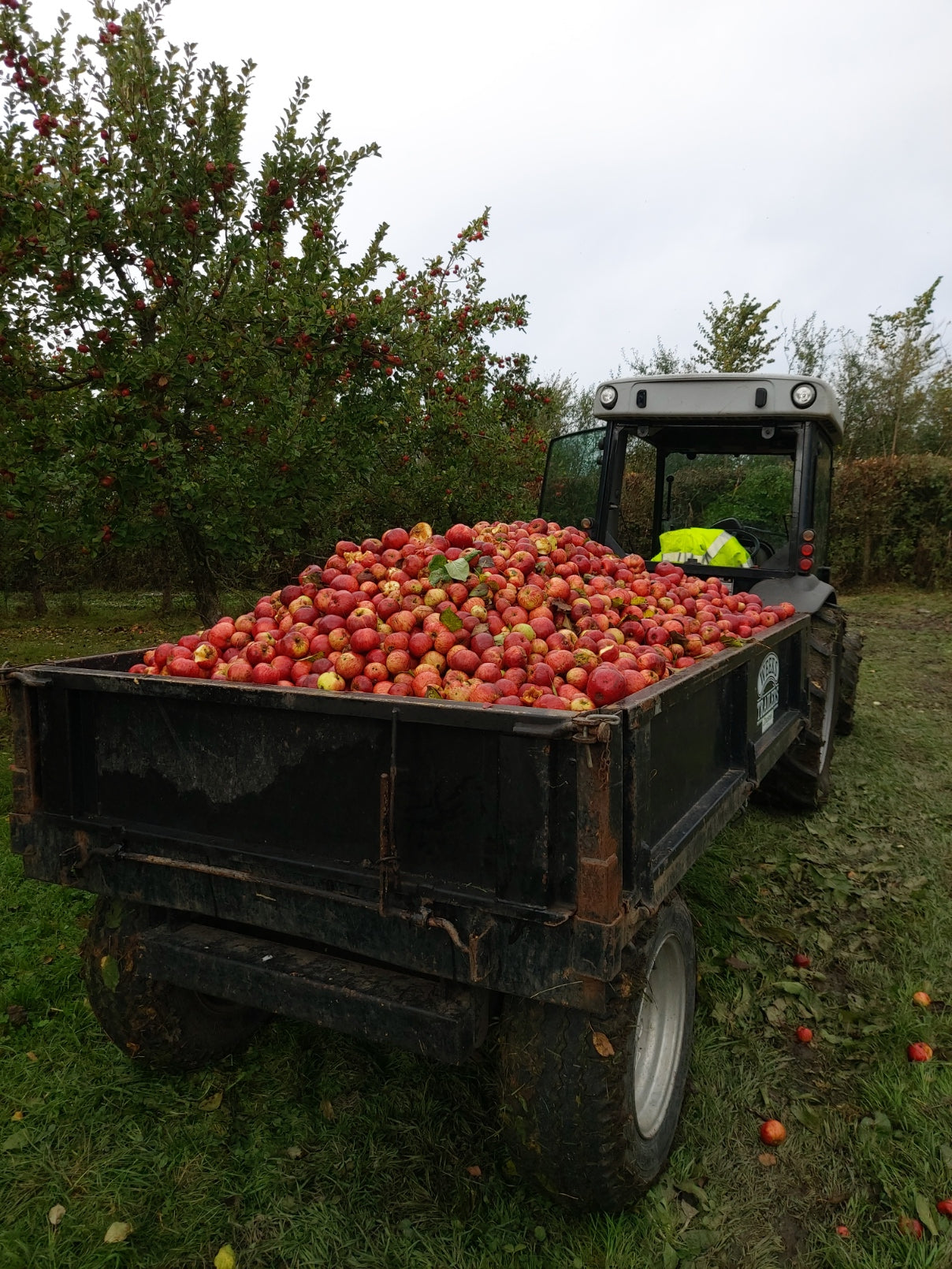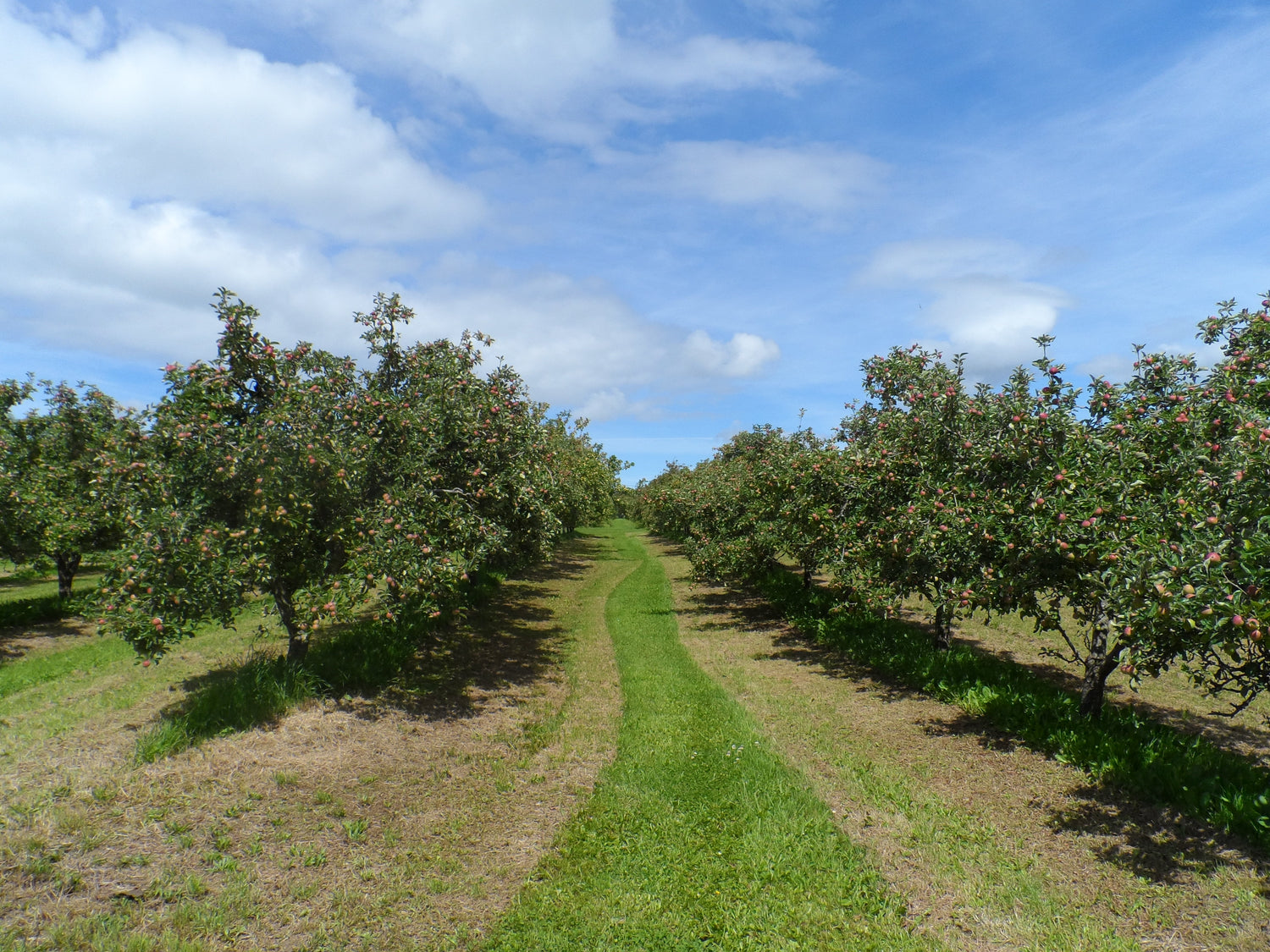
Our Story
Ad Astra Cider is a new cider company based in the heart of Somerset. Founded by an RAF Veteran and his family, the name "Ad Astra" is proudly derived from the Royal Air Force motto "Per Ardua Ad Astra".
Ad Astra Cider is made from traditional cider apples, picked, pressed, and fermented on site within 12 acres of beautiful apple orchard. Never from concentrate, the cider is made from freshly pressed juice and is naturally slightly different each year dependent on the environmental conditions during the growing season.
BBC Radio Somerset Interview
We spoke to BBC Radio Somerset's Charlie Taylor about all things Ad Astra. Play the clips below to listen!
How we make our cider
First the Apples
We grow 12 varieties of cider apples in our orchard. Some are known as bitter sharp, and others are bittersweet. Each cider apple has been chosen for its own taste profile and its suitability as a pollinator for some of the other varieties. We don't use pesticides in our orchard; instead, we let nature do the work for us. For example, we work hard to maintain the biodiversity of the orchard by leaving some standing deadwood to encourage insects. We put up bird boxes and feeders to increase our bird population, which, in turn, helps to reduce pests. We have beehives and solitary bee habitats to aid in pollination of the fruit, and we aerate the soil to keep the worms happy. All of this leads to growing the most delicious apples possible.
The Harvest
We don't pick the apples, or even shake the trees. We wait for them to fall naturally because we believe that this is the time when the apples have the most sugar and flavor. A few bumps and bruises don't hurt them, as they are destined for the apple press and not the supermarket shelves. As different varieties ripen at different times, the harvesting season usually runs from September through late November, although the weather can alter these times slightly.
The Pressing and Fermentation
All the apples are pressed on-site, within meters of where they have been harvested. The juice is pumped into large plastic cubes known as IBCs (Intermediate Bulk Containers). Each IBC will hold 1000 liters of apple juice. Once the IBC is full, we measure the potential final alcohol level using a hydrometer. This can vary wildly from year to year depending on the weather. For example, one of our favorite apples is the wonderful Dabinett. In 2021, the potential alcohol measurement was 5.7%. In 2022, due to the very hot dry summer months, the reading was 8.8%!
The next stage involves adding sulphites to protect the juice before adding champagne yeast to get the fermentation going. At this stage, we get a bit more modern in our approach, utilizing Wi-Fi hydrometers and cloud services to monitor the fermentation of the ciders throughout the next few months. We get updates every 5 minutes, so if anything looks suspicious, we can deal with it immediately.
Bottling and Drinking
Once the cider has finished fermenting, we move the juice from one IBC to another. This process is called "Racking" and involves transferring the juice to eliminate the buildup of dead yeast cells and other small particles of apple that have sunk to the bottom of the IBC, known as the "Lees." The time the cider spends in the second IBC is variable and comes down to the taste and complexity of the cider. Like wine, cider matures and evolves over time.
Once we are happy with the cider, we pasteurize and bottle it, ready for the best part of the whole process—drinking. Wassail!

Keep up to date with future releases and all things Ad Astra!
We are always producing new ciders and bringing our new products for our customers. To eep up to date with what we are doing click the button below to see our latest news!



